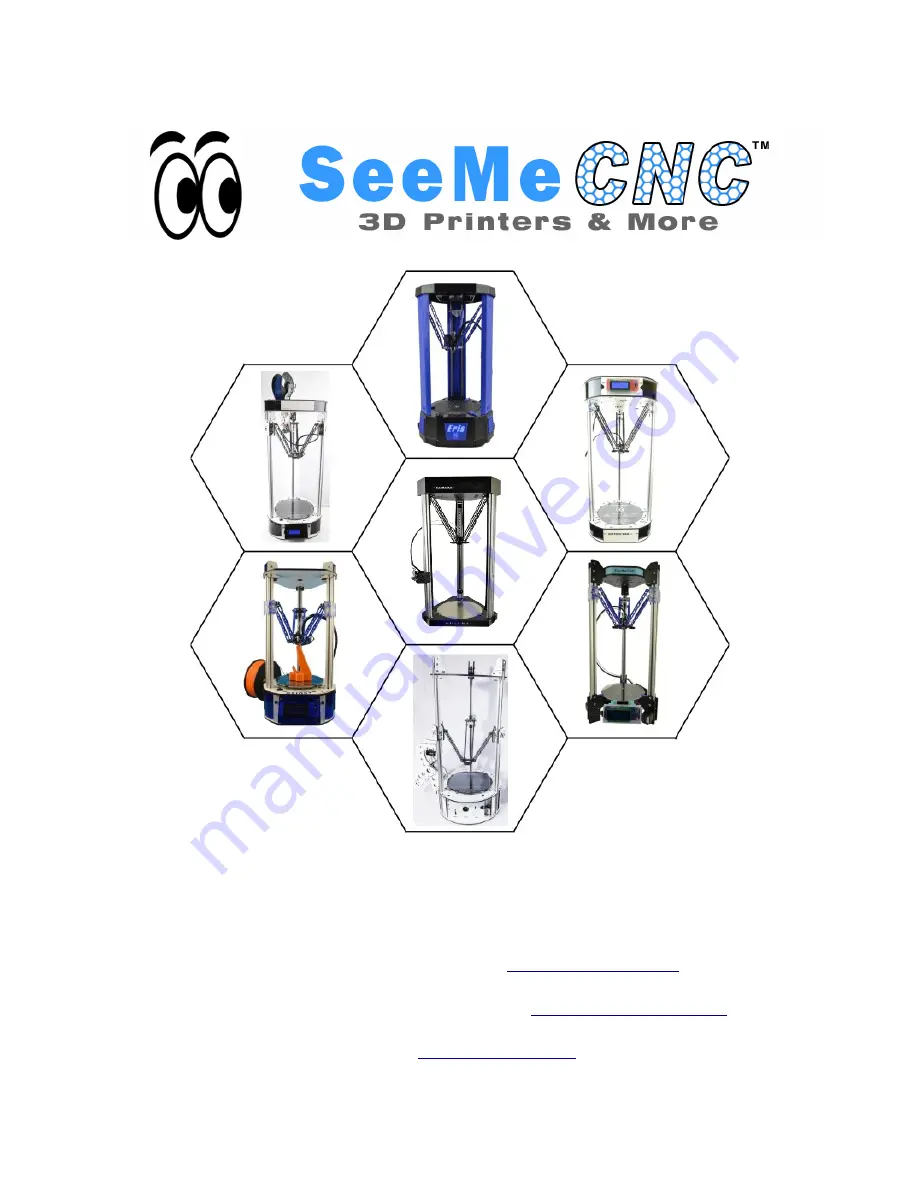
SeeMeCNC Delta 3D Printer Manual
First Edition
v1.00 – January 13th, 2018
Cura v3.1.0
Copyright 2018 By Gene Buckle –
Licensed as Creative Commons, Attribution-ShareAlike 3.0
Official support is available through
As a SeeMeCNC printer owner, you’ll also find a ton of great resources on the
forums at
forum
. seemecnc
. com
1
















